Community partnerships and local sponsor support form the financial backbone enabling schools, nonprofits, youth sports organizations, and civic institutions to fulfill their missions and serve their communities effectively. From businesses providing financial sponsorships to community organizations contributing volunteer hours to individual donors making meaningful gifts, these partnerships represent investments in community well-being that deserve comprehensive recognition matching their importance.
Yet many organizations struggle to showcase community partnerships and sponsor contributions in ways that adequately honor supporters while inspiring continued engagement. Traditional recognition approaches often prove inadequate—sponsor logos tucked into program booklets that disappear after events, banner sponsorships that fade in storage, donor plaques that overflow limited wall space, and partnership acknowledgments that lack the visibility and impact necessary to demonstrate genuine appreciation.
This comprehensive guide explores proven strategies for showcasing community partnerships and local sponsors through recognition approaches that honor contributions, strengthen relationships, provide meaningful visibility, and create sustainable support ecosystems. Whether your organization relies heavily on community partnerships or seeks to develop stronger sponsor relationships, understanding how to effectively recognize support creates foundations for long-term sustainability and mission advancement.
Understanding Community Partnerships and Sponsor Recognition
Before implementing specific recognition strategies, it’s essential to understand what community partnerships encompass, why recognition matters, and how effective acknowledgment differs from perfunctory gestures that fail to create lasting impact.
Types of Community Partnerships and Sponsorships
Community organizations typically benefit from diverse partnership and sponsorship categories, each requiring tailored recognition approaches that appropriately honor specific contribution types.
Financial Sponsorships and Direct Contributions:
The most visible partnership category includes businesses and individuals providing direct financial support through annual sponsorships, event underwriting, capital campaign contributions, program-specific funding, scholarship endowments, or general operating support. Financial partnerships deserve prominent recognition reflecting contribution significance while demonstrating stewardship that encourages continued support.
In-Kind Contributions and Service Donations:
Many community partners provide value through donated services, materials, facilities, equipment, or expertise rather than cash contributions. Professional services like legal advice or accounting support, donated venues for events, contributed materials or supplies, and loaned equipment represent substantial value deserving recognition equal to financial sponsorships.
Volunteer Time and Human Capital:
Partnerships involving significant volunteer time commitments—board service, committee participation, mentoring programs, or ongoing operational support—represent human capital investments often exceeding financial contribution values. Time-based partnerships require recognition emphasizing impact created through personal engagement rather than dollar values.
Strategic Partnerships and Collaborations:
Some partnerships involve mutual collaboration where organizations work together toward shared goals rather than traditional sponsor-recipient relationships. Collaborative partnerships create value for both parties and deserve recognition emphasizing shared accomplishment and partnership benefits rather than one-directional support.
Media Partnerships and Promotional Support:
Partnerships providing visibility through media coverage, promotional campaigns, social media amplification, or marketing support create awareness value that may exceed traditional sponsorship costs. Recognition of promotional partnerships acknowledges reach and visibility contributions rather than just financial support.

Why Comprehensive Recognition Matters for Partnership Sustainability
Effective recognition serves multiple strategic purposes beyond simple courtesy, directly influencing partnership retention, contribution growth, and organizational reputation within communities.
Partnership Retention and Renewal:
Research consistently demonstrates that recognized donors and sponsors renew support at significantly higher rates than those receiving minimal acknowledgment. Recognition communicates that contributions are noticed, valued, and making difference, providing psychological rewards that complement practical sponsorship benefits. Organizations failing to recognize partners adequately experience higher attrition rates requiring constant replacement recruitment rather than sustainable relationship building.
Contribution Level Growth:
Partners who feel genuinely appreciated for current support often increase future contributions when asked. Recognition creates positive associations with giving experiences, making higher-level commitments more attractive. Conversely, inadequate recognition can actually depress future giving as partners feel unappreciated despite meaningful contributions.
Reputation and Partnership Recruitment:
Visible, comprehensive recognition programs enhance organizational reputation among potential partners who observe how current supporters are treated. Prospective sponsors evaluating partnership opportunities notice whether organizations demonstrate genuine appreciation or take support for granted. Strong recognition programs become competitive advantages attracting quality partners from communities where multiple organizations compete for limited sponsorship resources.
Community Visibility and Brand Association:
For business sponsors, community partnerships provide brand visibility and positive association opportunities. Recognition programs delivering meaningful exposure create tangible returns on sponsorship investment, making partnerships more attractive to businesses seeking community engagement benefits beyond pure philanthropy.
Mission Alignment and Values Demonstration:
Recognition showcasing partnerships demonstrates organizational values including gratitude, transparency, community engagement, and stakeholder appreciation. How organizations treat partners reflects character and priorities, influencing perception among all stakeholders including clients, members, employees, and prospective supporters.
Understanding how effective donor recognition strategies strengthen partnerships helps organizations design acknowledgment programs creating genuine appreciation rather than perfunctory gestures.
Comprehensive Recognition Strategies for Community Partnerships
Showcasing community partnerships effectively requires multifaceted approaches addressing immediate acknowledgment, ongoing visibility, and strategic integration creating sustained partner appreciation and engagement.
Tiered Recognition Systems
Most organizations benefit from structured recognition tiers aligning acknowledgment levels with contribution significance while creating clear sponsorship pathways encouraging increased engagement over time.
Recognition Tier Structure:
Presenting Sponsor Level: Premium tier for major partnerships representing substantial annual commitments, multi-year agreements, or transformational contributions. Recognition includes maximum visibility across all organizational channels, exclusive benefits, and prominent acknowledgment in high-profile locations. Presenting sponsor recognition creates aspirational targets for partnership growth.
Major Sponsor Categories: Multiple major sponsor levels (platinum, gold, silver or similar naming conventions) accommodate various contribution ranges between presenting sponsorship and standard support levels. Tiered major recognition provides intermediate partnership options while ensuring appropriate acknowledgment differentiation based on support levels.
Program or Event Sponsors: Specific sponsorship opportunities tied to particular programs, events, initiatives, or facilities. Program-specific recognition allows targeted partnership matching sponsor interests with organizational activities while providing focused visibility around sponsored elements.
Supporting Sponsors and Contributors: Broad category encompassing smaller contributions, in-kind support, volunteer partnerships, and community supporters who deserve acknowledgment though contributions may not reach major sponsorship thresholds. Supporting recognition ensures comprehensive acknowledgment while maintaining distinction from premier sponsorship levels.
Legacy and Sustained Partnership Recognition: Special acknowledgment for long-term partners maintaining support across multiple years or decades. Longevity recognition honors sustained commitment regardless of current contribution levels, demonstrating that consistency matters alongside financial support.
Clear tier structures communicate partnership options while establishing recognition differentiation that makes major sponsorship levels attractive to businesses and individuals seeking prominent community visibility.

Physical and Digital Recognition Display Integration
Modern recognition programs combine physical presence in high-traffic locations with digital platforms providing comprehensive documentation, broader reach, and dynamic content capabilities traditional displays cannot match.
Physical Recognition Locations:
Main Entry Recognition: Primary building entrances create premium recognition locations where visitors, clients, members, and community members naturally encounter displays. Entry positioning demonstrates that partnership acknowledgment matters enough to occupy prestigious locations while ensuring maximum exposure.
Program-Specific Placement: Recognition displays in areas directly related to sponsored programs or facilities create clear connections between partners and their support impact. Athletic sponsors recognized in sports facilities, arts sponsors acknowledged in performance spaces, and educational sponsors honored in learning areas demonstrate tangible partnership benefits.
Event Recognition Presence: Temporary or permanent recognition at recurring events including tournaments, performances, ceremonies, or community gatherings provides visibility specifically to event attendees most likely to appreciate sponsored programming. Event recognition links partners directly to positive experiences their support enables.
Community-Facing Visibility: Recognition positioned where broader community members—not just internal stakeholders—encounter acknowledgment extends partner visibility beyond organizational boundaries. External-facing recognition provides community brand exposure that makes partnerships attractive to businesses seeking marketing benefits.
Digital Recognition Platforms:
Modern digital recognition displays transform partnership acknowledgment through capabilities that make comprehensive, engaging recognition practical regardless of partner numbers or contribution types. Digital platforms provide unlimited capacity for recognizing all partners equitably, multimedia content including videos and interactive elements, real-time updates adding new partners immediately, searchable databases allowing visitors to find specific businesses or individuals, and analytics revealing engagement patterns informing recognition strategy.
Solutions like Rocket Alumni Solutions provide comprehensive platforms specifically designed for community recognition, combining intuitive content management with professional presentation quality that properly honors partnership contributions while delivering meaningful visibility benefits partners value.
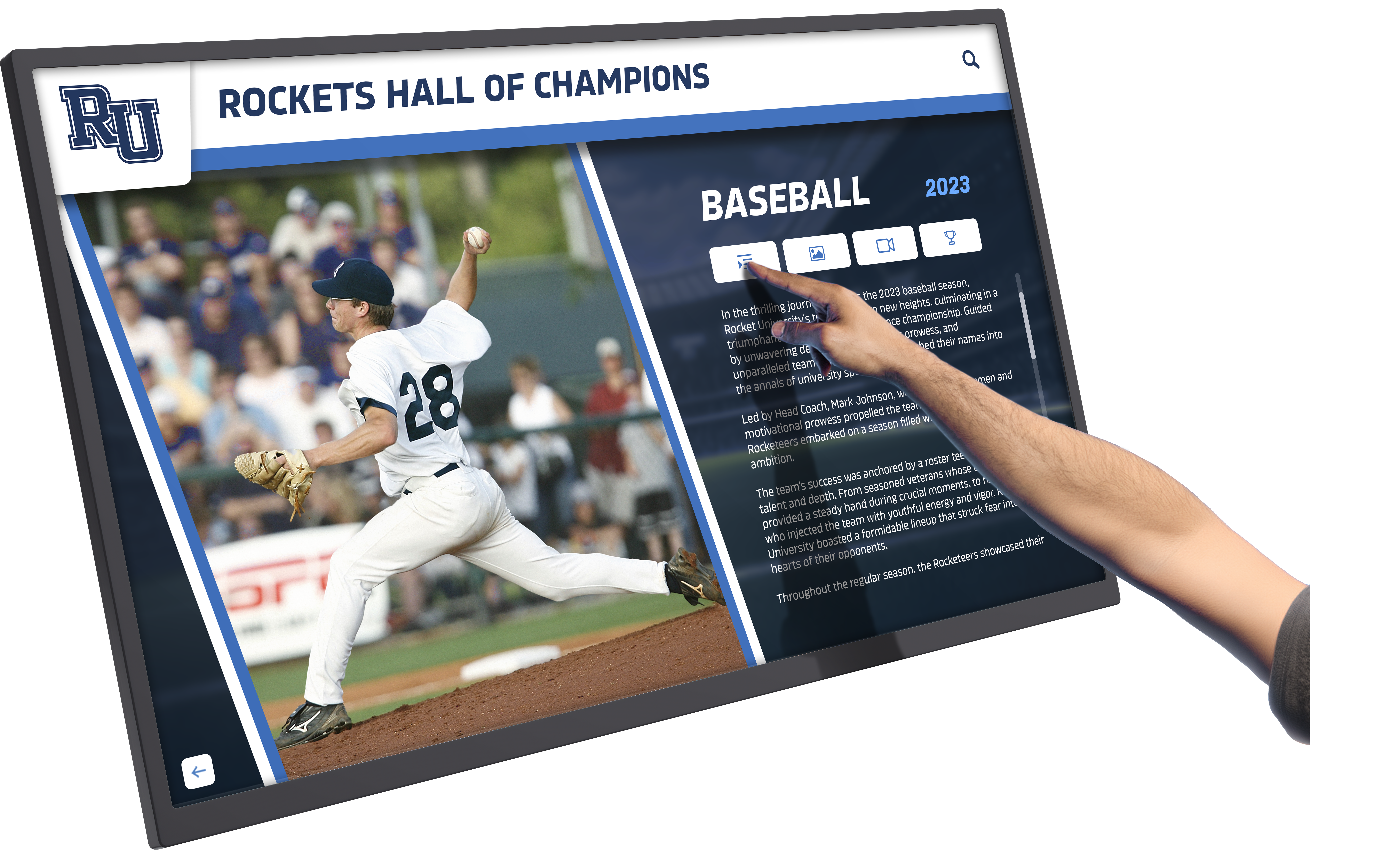
Multi-Channel Recognition Approaches
Comprehensive acknowledgment extends beyond single recognition locations or formats to create consistent partnership visibility across all organizational communication channels and touchpoints.
Website and Digital Presence:
Dedicated Partnership Pages: Maintain website sections specifically showcasing community partners with company profiles, contribution descriptions, partnership stories, and links to sponsor websites. Dedicated pages create permanent online recognition accessible globally while providing search engine visibility benefits for partner businesses.
Homepage Recognition Features: Rotate partner logos, profiles, or acknowledgments on organizational homepages ensuring high-visibility recognition to all website visitors. Homepage features demonstrate that partnerships matter enough to occupy premium digital real estate.
Event and Program Pages: Acknowledge sponsors directly on web pages describing specific programs, events, or initiatives they support. Contextual recognition creates clear connections between partners and the activities their support enables.
Social Media Recognition:
Regular Partner Features: Systematically feature community partners through dedicated social media posts highlighting individual businesses, describing partnership contributions, sharing impact stories, or celebrating partnership milestones. Regular features ensure all partners receive social visibility rather than recognition concentrating on largest sponsors.
Partnership Story Campaigns: Create content series exploring partnership stories including why businesses chose to support your organization, what partnership means to them, how contributions align with business values, or impact they’ve witnessed. Story-based content creates compelling recognition that humanizes partnerships while providing engaging social content.
Event and Milestone Recognition: Acknowledge sponsors prominently in social media coverage of events, program launches, milestone achievements, or success stories their support enabled. Timely recognition around specific occasions creates relevant, newsworthy content while demonstrating partnership impact.
User-Generated Content Encouragement: Facilitate content creation by partners themselves—encouraging sponsors to share their partnership stories, reposting partner content that mentions your organization, or creating co-branded content featuring both organizations. Collaborative content distribution extends reach while deepening partnership engagement.
Understanding how community engagement strategies strengthen partnerships helps organizations create recognition programs that build genuine relationships rather than transactional acknowledgment.
Event-Based Recognition Integration
Events provide natural recognition opportunities where partners receive acknowledgment from attendees most appreciative of sponsored programming while creating memorable association between sponsors and positive experiences.
Event Recognition Elements:
Verbal Acknowledgment: Incorporate partner recognition into opening remarks, announcements, or program scripts ensuring live audiences hear sponsor acknowledgment from organizational leaders. Verbal recognition demonstrates immediate gratitude while creating personal connection between leadership and sponsors.
Printed Program Recognition: Include comprehensive sponsor listings in event programs, playbills, or informational materials attendees receive. Printed recognition creates keepsakes attendees take home, extending visibility beyond event duration.
Visual Signage and Displays: Position sponsor banners, recognition boards, or digital displays prominently at event venues where attendees naturally congregate. Visual recognition creates omnipresent sponsor visibility throughout event experiences.
Digital Display Integration: Incorporate sponsor recognition into digital displays, video boards, or presentation content throughout events. Digital integration provides dynamic, engaging recognition that maintains attention better than static signage.
VIP Recognition Experiences: Offer premium sponsors special recognition experiences including event hospitality, meet-and-greet opportunities with key stakeholders, behind-the-scenes access, or exclusive recognition moments. VIP experiences create memorable partnership benefits beyond basic visibility.
Media Coverage Integration: Ensure sponsors receive acknowledgment in media coverage of events including press releases, media interviews, photo captions, and news stories. Media recognition extends visibility beyond event attendees to broader community audiences.
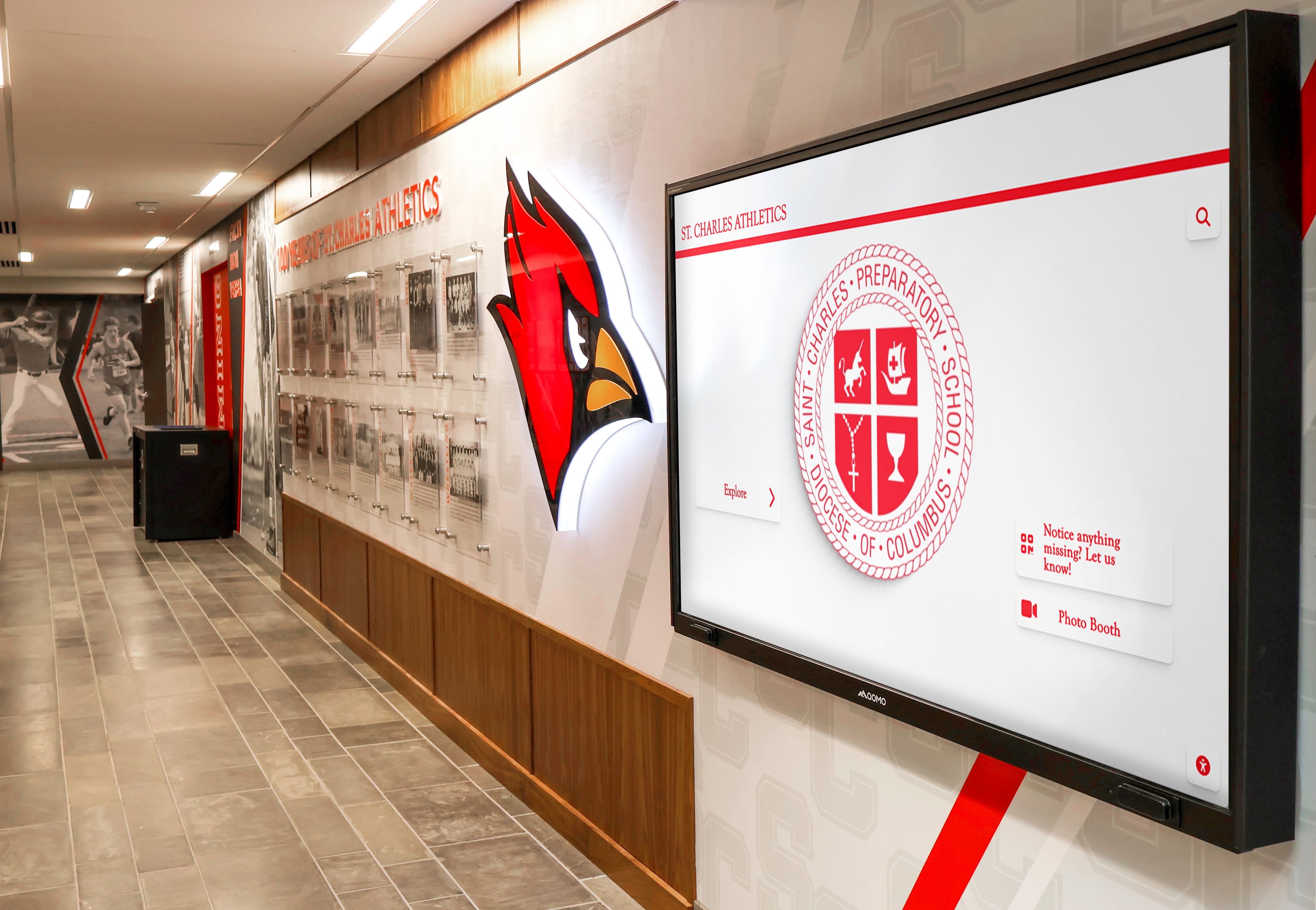
Creating Compelling Partnership Recognition Content
Recognition effectiveness depends not just on visibility placement but on content quality that tells partnership stories, demonstrates impact, and creates emotional connection with recognition audiences.
Beyond Logo Recognition: Telling Partnership Stories
Traditional sponsor recognition often consists of simple logo displays or name listings that fail to communicate partnership significance or create meaningful acknowledgment. Comprehensive recognition tells stories that honor contributions while inspiring others to become partners.
Narrative Recognition Components:
Partnership Origin Stories: Share how partnerships began including what attracted sponsors to your organization, initial conversations that sparked relationships, or circumstances that led to partnership formation. Origin stories humanize partnerships while demonstrating that sponsorship relationships reflect genuine connection rather than transactional exchanges.
Impact Documentation: Describe specific impact that partnership contributions enabled including programs delivered, people served, facilities improved, scholarships awarded, or challenges overcome through partner support. Impact documentation creates clear connections between contributions and mission advancement while demonstrating that partnership matters make tangible differences.
Partner Motivation and Values: Explore why partners chose to support your organization including personal connections, community commitment, business values, or philanthropic priorities that align with organizational mission. Values-based recognition demonstrates that partnerships reflect shared purpose rather than pure marketing decisions.
Relationship Evolution: For sustained partnerships, document relationship growth over years or decades including contribution increases, expanded partnership scope, deepening engagement, or evolving collaboration. Evolution narratives honor commitment while demonstrating that partnerships strengthen through positive experiences.
Testimonial Integration: Incorporate direct quotes from partner representatives expressing why they support your organization, what partnership means to their business or family, or what they value most about the relationship. Authentic testimonials create compelling recognition while providing social proof encouraging prospective partners.
Understanding how storytelling enhances digital recognition helps organizations create partnership acknowledgment that resonates emotionally while demonstrating genuine appreciation.
Visual Recognition Design Best Practices
Recognition visual presentation significantly influences perceived value and effectiveness, requiring attention to design principles ensuring professional, attractive, impactful displays.
Visual Design Considerations:
Professional Logo Integration: Incorporate partner logos at appropriate sizes maintaining visual balance while ensuring legibility and brand integrity. Poor logo scaling, distortion, or low resolution undermines recognition value while potentially harming partner brand presentation.
Consistent Visual Hierarchy: Establish clear visual hierarchy reflecting recognition tiers through layout, sizing, positioning, or styling differences that appropriately differentiate contribution levels while maintaining aesthetic coherence. Visual hierarchy should feel natural rather than uncomfortable or awkward for sponsors at various levels.
High-Quality Photography: Include professional-quality photographs of partner businesses, representatives, sponsored programs in action, or partnership events. Quality imagery creates visual interest while humanizing partnerships beyond corporate logos.
Cohesive Design Language: Maintain consistent design aesthetics across all recognition touchpoints including physical displays, website elements, social media graphics, and event materials. Visual consistency creates polished, professional impression reflecting well on both organizations and partners.
Accessibility and Readability: Ensure recognition displays meet accessibility standards including appropriate contrast ratios, readable font sizes, clear typography, and compatible with assistive technologies for digital displays. Accessible design ensures all community members can engage with partnership recognition.
Brand Alignment: Recognition design should complement your organization’s visual identity while providing appropriate prominence to partner brands. Balanced presentation honors partnerships without overwhelming organizational identity.
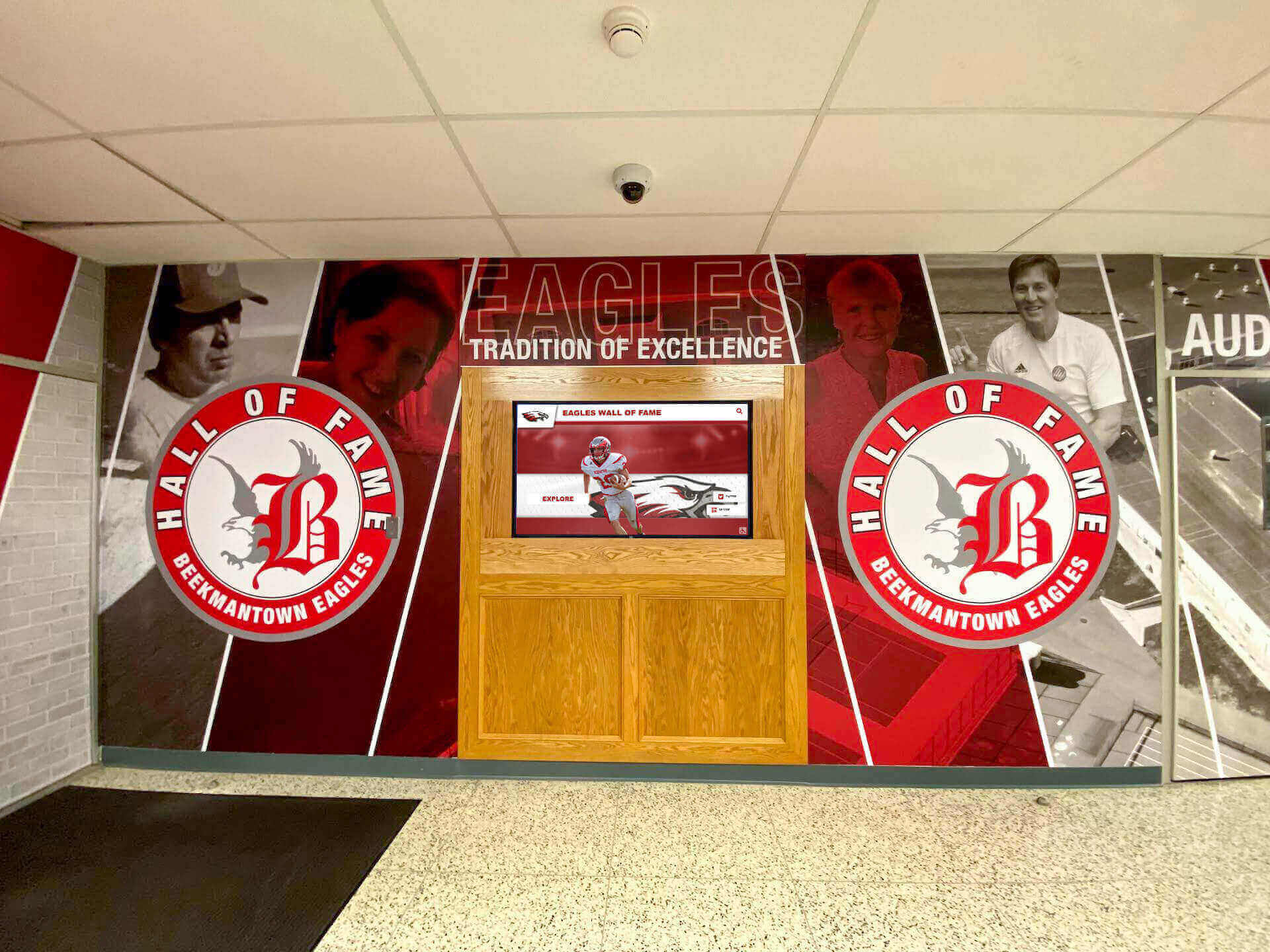
Interactive Recognition Features
Digital recognition platforms enable interactive elements that increase engagement, provide enhanced information, and create memorable recognition experiences impossible with static displays.
Interactive Recognition Elements:
Searchable Partner Databases: Allow visitors to search partnerships by business name, category, support level, geographic location, or keyword. Search functionality helps community members discover specific sponsors while enabling self-directed exploration that increases engagement.
Detailed Partner Profiles: Provide expanded information about partners accessible through interaction including full company descriptions, products or services offered, contact information, website links, partnership history, and support details. Detailed profiles create comprehensive recognition while providing practical information benefiting partner businesses.
Video Content Integration: Incorporate video testimonials from partner representatives, interviews exploring partnership motivations, footage of sponsored programs in action, or partnership celebration recordings. Video content creates engaging recognition that holds attention significantly longer than static displays.
Photo Galleries: Compile photo collections showing partners at events, partnership announcements, program activities their support enables, or facility improvements their contributions fund. Visual documentation creates compelling recognition while preserving partnership memories.
Social Media Feeds: Integrate live social media feeds displaying posts mentioning partner businesses, partnership hashtags, or tagged content. Social integration creates dynamic recognition that reflects ongoing partnership engagement beyond static acknowledgment.
Interactive Maps: For organizations with geographically distributed partners, provide interactive maps showing sponsor locations throughout communities. Geographic visualization demonstrates partnership breadth while creating practical business discovery tools for community members.
Exploring modern recognition platforms helps organizations understand capabilities available through contemporary digital solutions.
Building Strategic Partnership Recognition Programs
Effective recognition requires systematic approaches ensuring consistent acknowledgment, sustainable operations, and strategic integration with broader partnership development and community engagement initiatives.
Establishing Recognition Standards and Guidelines
Clear recognition standards ensure equitable partner treatment, maintain consistency despite staff transitions, and communicate acknowledgment expectations that inform partnership decisions.
Recognition Standard Components:
Tier Definition and Benefits: Document specific recognition benefits associated with each sponsorship tier including physical display presence, digital recognition scope, event acknowledgment level, social media features, and other visibility elements. Clear benefit definitions ensure partners understand recognition value while preventing misunderstandings or unmet expectations.
Content Requirements: Establish information required from partners for recognition including logo files in specified formats, company descriptions with character limits, contact information, website URLs, and any necessary approvals or permissions. Clear requirements streamline content collection while ensuring you possess materials needed for proper acknowledgment.
Timeline Commitments: Specify when partners can expect recognition implementation after contributions including physical display timelines, digital platform addition schedules, and any factors that might influence timing. Realistic timeline communication prevents frustration when recognition doesn’t appear immediately.
Recognition Duration: Define how long recognition remains active including annual renewal expectations, multi-year commitment acknowledgment, or legacy recognition for former sponsors. Duration clarity prevents confusion when partnership transitions occur.
Modification and Update Procedures: Document processes for updating partner information, modifying logos or content, correcting errors, or adjusting recognition following partnership changes. Clear procedures ensure partners know how to request updates while enabling efficient maintenance.
Equity and Fairness Principles: Establish principles ensuring equitable treatment across partners at similar support levels, preventing favoritism perceptions, and addressing situations where recognition conflicts might occur. Fairness principles maintain credibility while building trust with entire sponsor communities.
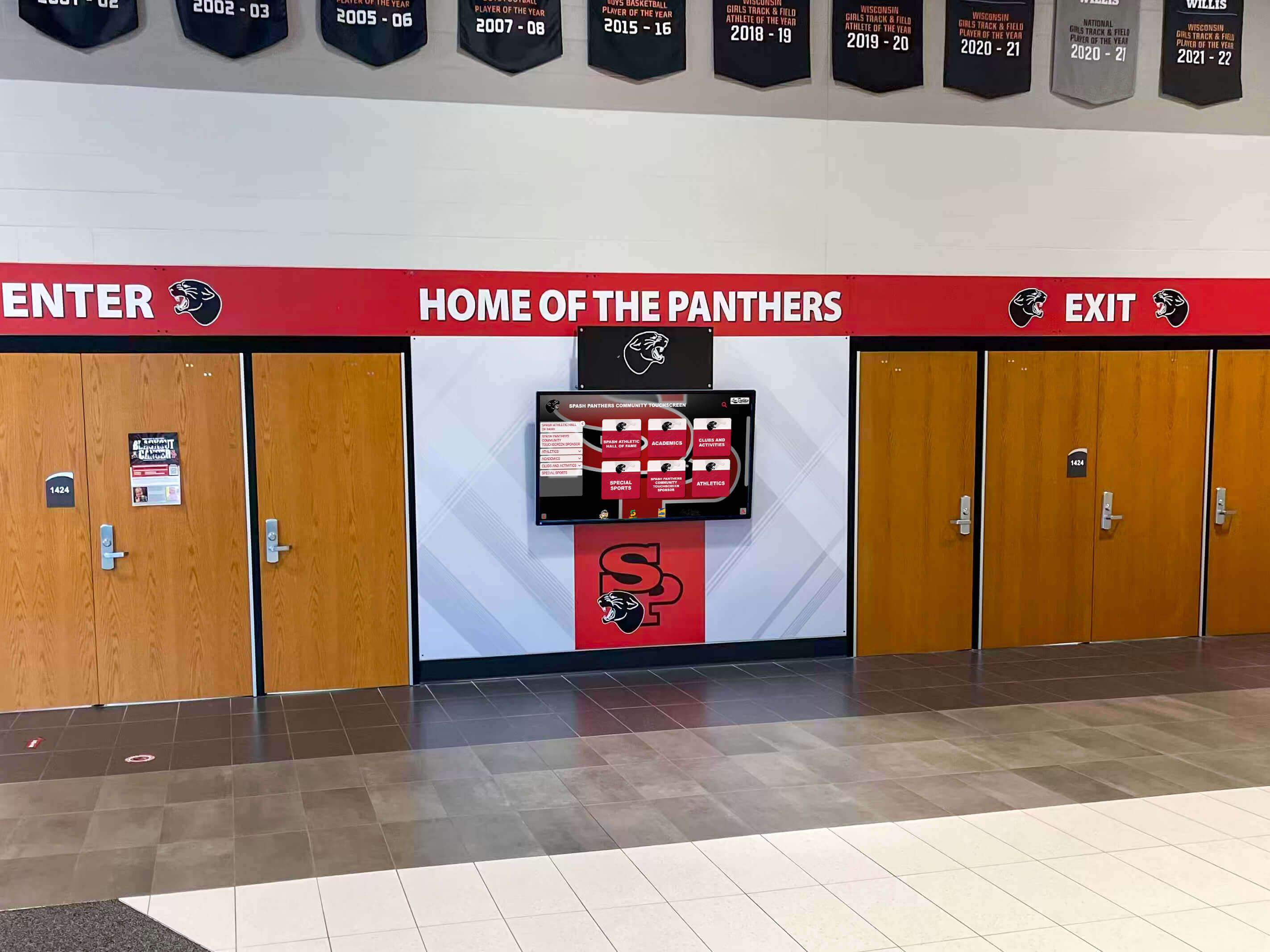
Integrating Recognition with Partnership Development
Recognition programs should integrate strategically with broader partnership development initiatives, supporting cultivation, solicitation, stewardship, and renewal processes that build sustainable support ecosystems.
Recognition-Development Integration:
Cultivation Tool Integration: Use recognition displays and content as cultivation tools during prospective partner conversations. Showing potential sponsors how current partners are recognized demonstrates appreciation culture while providing concrete visibility examples. Recognition visibility itself can inspire partnership interest among businesses observing how organizations honor supporters.
Solicitation Benefit Description: Incorporate specific recognition benefits into partnership proposals and solicitation materials. Clear description of acknowledgment scope helps prospects evaluate partnership value while demonstrating that visibility benefits accompany contribution requests. Recognition benefits can tip partnership decisions when prospects compare multiple opportunities.
Stewardship Communication: Leverage recognition content in ongoing stewardship communication with partners including personalized updates showing their recognition presence, sharing analytics about recognition engagement, or celebrating when their acknowledgment receives particular attention. Recognition-based stewardship demonstrates concrete appreciation while keeping partnerships top-of-mind.
Renewal Incentive Opportunity: Position enhanced recognition as natural benefit of partnership renewal or increased commitment. Recognition tier advancement provides tangible incentives for contribution growth while making renewal decisions more attractive than allowing partnerships to lapse.
Retention Relationship Building: Use recognition events, unveilings, or appreciation activities as relationship-building opportunities with partners. Ceremonial elements create meaningful experiences that strengthen emotional bonds beyond transactional sponsorship relationships.
Understanding how advancement teams leverage recognition solutions provides insights into integrating acknowledgment with comprehensive partnership development strategies.
Measuring Recognition Program Effectiveness
Organizations must assess recognition program impact demonstrating value to organizational leadership while identifying improvement opportunities that enhance partner satisfaction and support sustainability.
Recognition Assessment Metrics:
Partner Satisfaction Measures: Survey sponsors about recognition satisfaction including visibility quality, acknowledgment timeliness, benefit delivery against expectations, and overall appreciation felt. Direct partner feedback reveals whether recognition meets needs while identifying specific improvement areas.
Retention and Renewal Rates: Track partnership retention comparing rates for partners receiving comprehensive recognition versus minimal acknowledgment. Retention analysis demonstrates recognition program value through tangible support sustainability metrics.
Contribution Growth Patterns: Monitor whether recognized partners increase contributions over time, upgrade sponsorship tiers, or expand partnership scope. Growth patterns suggest recognition effectiveness at inspiring deeper engagement and increased support.
Partnership Recruitment Indicators: Assess whether strong recognition programs influence partnership recruitment through prospect feedback, competitive positioning, or increased sponsorship interest. Recruitment impact demonstrates recognition value beyond current partner retention.
Engagement Analytics: For digital recognition platforms, analyze usage patterns including view counts, average engagement duration, search behaviors, and content interaction rates. Analytics reveal whether community members actually engage with partnership recognition or whether acknowledgment receives minimal attention.
Brand Visibility Assessment: Evaluate partner brand visibility through website analytics, social media reach metrics, event attendance, and community awareness. Visibility measures demonstrate tangible recognition benefits justifying partnership investments.
Qualitative Feedback Collection: Gather anecdotal feedback from partners, staff, community members, and other stakeholders about recognition program perceptions, memorable acknowledgment experiences, or suggestions for enhancement. Qualitative insights complement quantitative metrics while revealing recognition program impact on relationships and reputation.
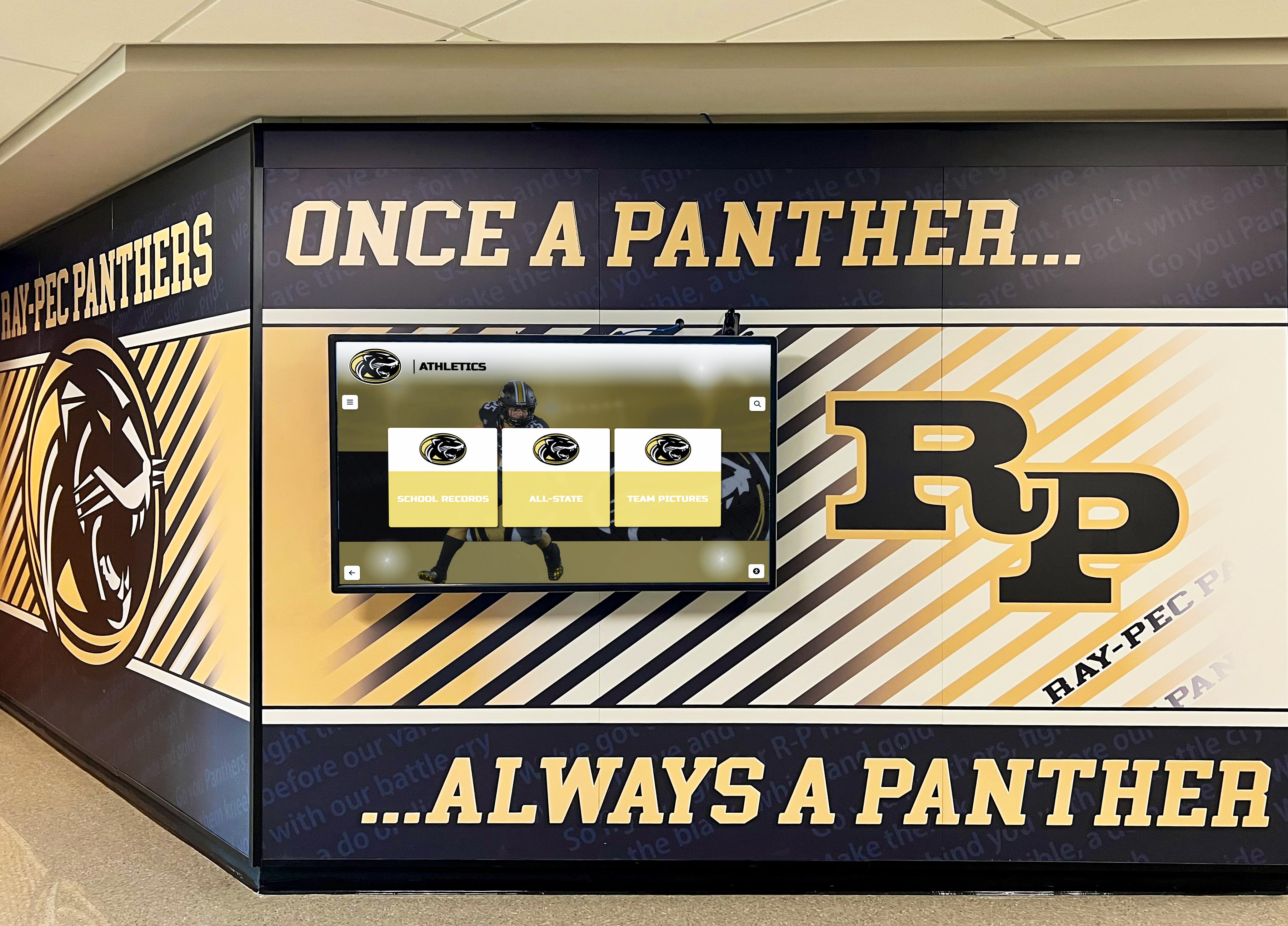
Special Considerations for Different Organization Types
Different community organization contexts create unique partnership recognition needs requiring tailored approaches addressing specific circumstances and stakeholder expectations.
Educational Institution Partnership Recognition
Schools, colleges, and universities rely heavily on business partnerships, donor support, and community sponsorships making comprehensive recognition particularly important for educational advancement.
Educational Recognition Considerations:
Schools often host multiple recognition constituencies including athletic boosters, performing arts patrons, academic program supporters, capital campaign donors, and general institutional sponsors. Comprehensive recognition systems accommodate diverse partnership types while maintaining coherent overall presentation.
Athletic departments particularly benefit from sponsor recognition displaying business support prominently in gymnasiums, stadiums, and competition venues where community members gather. Sports sponsorship visibility provides marketing exposure that makes partnerships attractive to businesses seeking community engagement opportunities.
Understanding how schools build pride through recognition helps educational institutions leverage partnership acknowledgment within broader community building initiatives.
Nonprofit Organization Partnership Recognition
Nonprofits with limited resources must maximize recognition impact despite budget constraints while demonstrating stewardship that sustains support from donors, sponsors, and community partners.
Nonprofit Recognition Strategies:
Resource-constrained nonprofits benefit tremendously from digital recognition platforms that provide comprehensive acknowledgment capabilities without extensive physical installation costs or ongoing maintenance expenses. Cloud-based solutions enable professional recognition accessible to organizations of any size.
Mission-focused nonprofits should emphasize impact created through partnerships in recognition content. Sponsors supporting nonprofits often prioritize mission advancement over business exposure, making impact-focused recognition particularly meaningful and appropriate.
Sports Organization Partnership Recognition
Youth sports leagues, athletic clubs, and recreational organizations depend heavily on local business sponsorships and community support making visible, effective recognition essential for program sustainability.
Sports Organization Recognition Needs:
Sports organizations typically host natural recognition opportunities through team sponsorships, tournament underwriting, facility naming rights, equipment donations, and season-long program support. Comprehensive recognition systems accommodate these diverse partnership structures while providing appropriate acknowledgment for each contribution type.
Competition venues provide premium recognition locations where sponsors receive visibility to event attendees most appreciative of sporting opportunities their support enables. Venue-based recognition should complement digital platforms extending acknowledgment beyond game days.
Civic Organization Partnership Recognition
Municipal programs, community centers, library foundations, and civic groups benefit from business partnerships and community support requiring public recognition demonstrating transparent stewardship of community resources.
Civic Recognition Considerations:
Government-affiliated organizations must navigate transparency requirements and public perception considerations in partnership recognition. Clear acknowledgment benefits public understanding of how community partnerships support civic services while demonstrating appropriate stewardship of private contributions supplementing public resources.
Community-wide visibility matters particularly for civic organizations where recognition demonstrates broad community support rather than narrow constituency backing. Public-facing recognition locations and digital platforms accessible to all community members provide appropriate visibility scope.
Exploring community honors display strategies helps civic organizations showcase diverse partnerships appropriately.
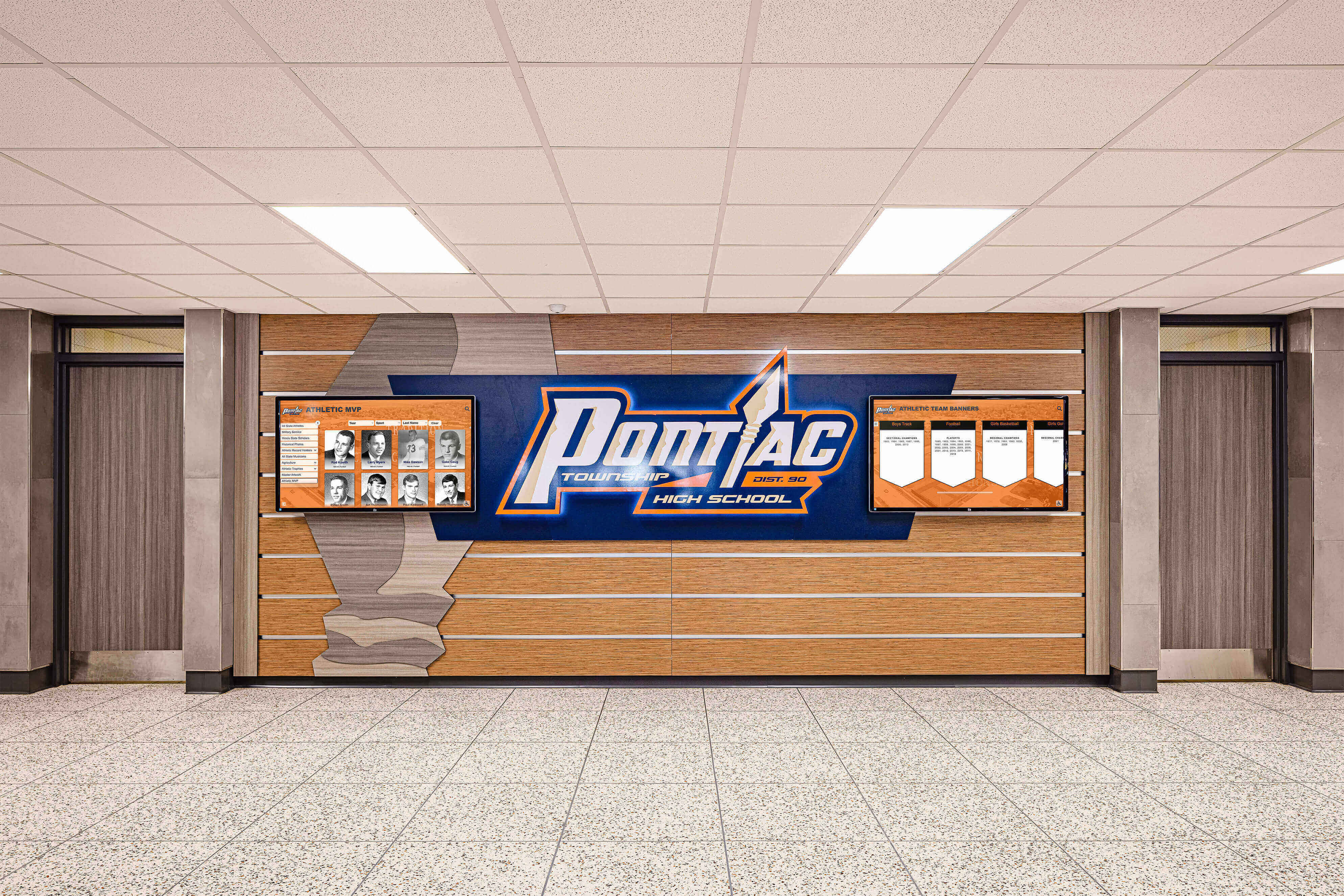
Implementing Partnership Recognition Programs
Organizations ready to establish or enhance partnership recognition should follow systematic implementation approaches ensuring comprehensive coverage, professional execution, and sustainable operations.
Conducting Partnership Inventory and Recognition Audit
Begin by thoroughly documenting all current and recent community partnerships, assessing existing recognition efforts, and identifying gaps requiring attention.
Inventory Process Steps:
Comprehensive Partnership Documentation: Create complete databases of all partners including businesses, organizations, and individuals who have provided financial support, in-kind contributions, volunteer time, or other assistance. Document contribution types, support levels, partnership duration, and any existing recognition commitments or agreements.
Recognition Commitment Review: Audit all partnership agreements, sponsorship proposals, and donor communications identifying specific recognition commitments made to partners. Documentation ensures you understand acknowledgment obligations requiring fulfillment.
Current Recognition Assessment: Evaluate existing recognition efforts including physical displays, digital acknowledgment, social media features, event recognition, and other visibility currently provided. Assessment reveals what’s working well and where enhancement opportunities exist.
Partner Satisfaction Evaluation: Survey current partners about recognition satisfaction, visibility perceptions, and acknowledgment improvement suggestions. Direct feedback reveals whether existing efforts meet partner expectations or whether significant gaps require addressing.
Best Practice Research: Study partnership recognition approaches used by peer organizations, industry leaders, and innovative institutions. Research identifies proven strategies worth adapting while revealing possibilities you hadn’t previously considered.
Technology Selection for Digital Recognition
Organizations pursuing digital partnership recognition must evaluate platform options ensuring selected solutions meet specific needs, budget constraints, and technical requirements.
Digital Platform Selection Criteria:
Recognition-Specific Functionality: Prioritize platforms designed specifically for donor and sponsor recognition rather than general content management systems requiring extensive customization. Purpose-built solutions provide recognition features and templates that streamline implementation while ensuring professional results.
Content Management Capabilities: Evaluate ease of adding partners, updating information, uploading logos and media, and maintaining accuracy despite partnership changes. Intuitive management interfaces enable non-technical staff to maintain recognition currency without constant IT support.
Design Flexibility: Assess visual customization options ensuring platforms can accommodate your organization’s branding while providing attractive partner presentation. Rigid templates may prove limiting while excessive customization requirements create implementation complexity.
Search and Navigation Features: Verify robust search, filtering, and browsing capabilities allowing visitors to discover specific partners or explore recognition content in various ways. Poor navigation frustrates users while limiting recognition effectiveness.
Analytics and Reporting: Confirm platforms provide usage analytics, engagement metrics, and reports demonstrating recognition program value. Data insights inform program refinement while justifying recognition investments to leadership.
Integration Capabilities: Check compatibility with existing organizational systems including websites, donor databases, social media platforms, and other technologies. Integration enables efficient operations while preventing recognition from existing in organizational technology silos.
Support and Training: Evaluate vendor support quality, training resources, implementation assistance, and ongoing help availability. Strong support ensures successful launch and sustainable long-term operations despite staff transitions.
Understanding touchscreen software options helps organizations evaluate digital recognition platforms comprehensively.
Launch Planning and Rollout Strategy
Successful recognition program launches require careful planning ensuring proper execution while generating awareness that maximizes partner appreciation and community engagement.
Launch Planning Elements:
Content Development Timeline: Establish realistic timelines for collecting partner information, creating recognition content, obtaining necessary approvals, and completing technical implementation. Rushed launches often suffer quality problems undermining recognition credibility.
Soft Launch Testing: Implement initial recognition with limited visibility allowing content review, error correction, and refinement before broad promotion. Soft launches prevent embarrassing mistakes from receiving widespread attention.
Partner Preview Opportunity: Provide partners opportunities to review their recognition before public launch ensuring accuracy, addressing concerns, and demonstrating consideration. Preview processes build partner satisfaction while catching errors.
Launch Event Planning: Consider hosting recognition program unveiling events celebrating partnerships while generating awareness. Launch events create memorable experiences for partners while providing natural promotion opportunities.
Media and Communication Strategy: Develop comprehensive launch communication including press releases, social media campaigns, website announcements, email notifications, and community presentations. Multi-channel communication ensures broad awareness while demonstrating program importance.
Feedback Collection Mechanisms: Establish processes for gathering partner feedback after launch including surveys, informal conversations, or formal review sessions. Early feedback enables rapid refinement improving recognition before negative perceptions solidify.

Conclusion: Building Sustainable Support Through Strategic Recognition
Community partnerships and local sponsor support enable organizations to serve their missions effectively, create community impact, and deliver programs that strengthen communities. These partnerships represent investments in community well-being that deserve comprehensive recognition matching their importance—not as afterthoughts or perfunctory gestures, but as strategic acknowledgment honoring contributions while inspiring continued engagement and attracting new supporters.
Organizations implementing systematic partnership recognition programs reap substantial benefits extending well beyond sponsor satisfaction. Comprehensive recognition strengthens retention ensuring sustainable support, inspires contribution growth as appreciated partners increase engagement, enhances recruitment positioning organizations favorably when prospects evaluate opportunities, provides meaningful visibility delivering tangible partner benefits, and demonstrates organizational values including gratitude, transparency, and stakeholder appreciation.
The most successful partnership recognition programs demonstrate several key characteristics distinguishing them from minimal acknowledgment approaches: comprehensive coverage ensuring all partners receive appropriate recognition, consistent quality maintaining professionalism across all acknowledgment touchpoints, strategic visibility placement maximizing exposure in locations partners value, compelling content telling partnership stories rather than simply listing names, sustainable management procedures maintaining currency despite staff transitions, and integrated connection with broader partnership development strengthening cultivation, stewardship, and renewal processes.
Modern digital recognition technology has transformed partnership acknowledgment from physical display limitations to unlimited capacity platforms supporting multimedia content, interactive features, real-time updates, and comprehensive analytics. Organizations of any size can now implement professional recognition programs that properly honor community partnerships while delivering visibility benefits that make sponsorships attractive investments.
Community partnerships represent remarkable commitments by businesses, organizations, and individuals choosing to invest in collective community well-being. These partners deserve recognition that doesn’t fade when banners deteriorate, disappear when wall space fills, or get forgotten when staff transitions occur. They deserve recognition that inspires for years, demonstrates genuine appreciation, and honors the remarkable generosity required to support community organizations pursuing important missions.
Ready to transform how your organization showcases community partnerships and local sponsors? Solutions like Rocket Alumni Solutions provide comprehensive digital recognition platforms specifically designed for community organizations, combining intuitive technology with professional support that makes sophisticated partnership recognition practical regardless of organizational size or technical expertise. Every partnership represents meaningful community investment—modern recognition ensures these contributions receive the lasting honor they truly deserve.




































